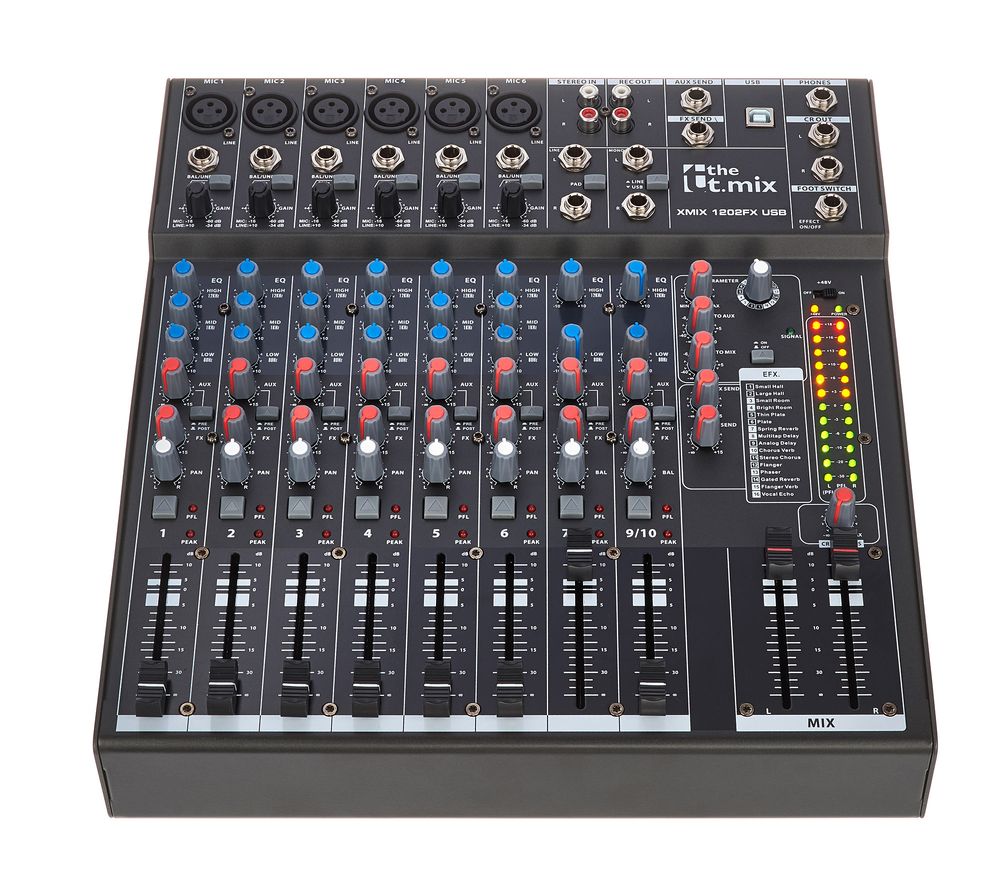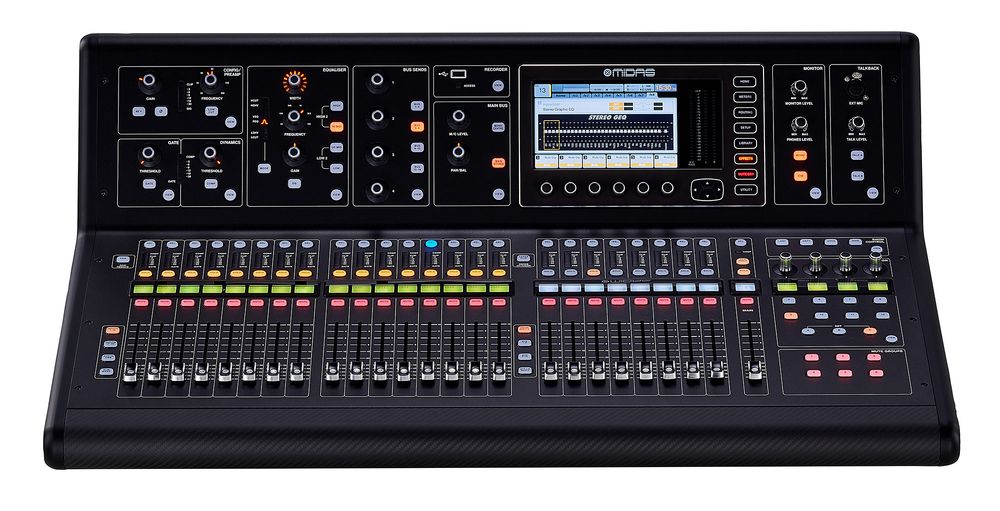4. Mixers
In the mixer, all the signals come together, are pre-amplified and equalized, processed, mixed, and then sent out again. When it comes to mixers, it's often a case of "more is more."
Based on experience, many users tend to cut costs on their equipment. It's wise to plan with some reserves in mind. So, before making decisions, consider the following:
- How many microphones, instruments, and line sources (like MP3 players, smartphones, tablets, etc.) do you want to connect on the input side?
- How many outputs (for monitoring, for example) do you need?
- What additional features are you looking for (effects, recording capability, remote control, etc.)?
The requirements for a poetry slam with one or two speakers are different from those for a six-piece band with in-ear monitoring.
If you have only a few required inputs and outputs, a small analogue solution should do the job.

12-Channel Analogue Mixer with 6 Microphone Inputs, Effects, and a Monitor Path
When it comes to handling an entire band or equipping a club for various artists, you'd be better off with a more complex digital solution.

40-Channel Digital Mixer with 32 Microphone Inputs, 16 Outputs, Digital Stagebox Integration, Remote Control, and a 32x32 Channel USB Interface
If you're at a point where you're considering getting a mixer or diving deeper into this subject in general, we recommend reading our Online Guides for Mixers and Digital Mixers



